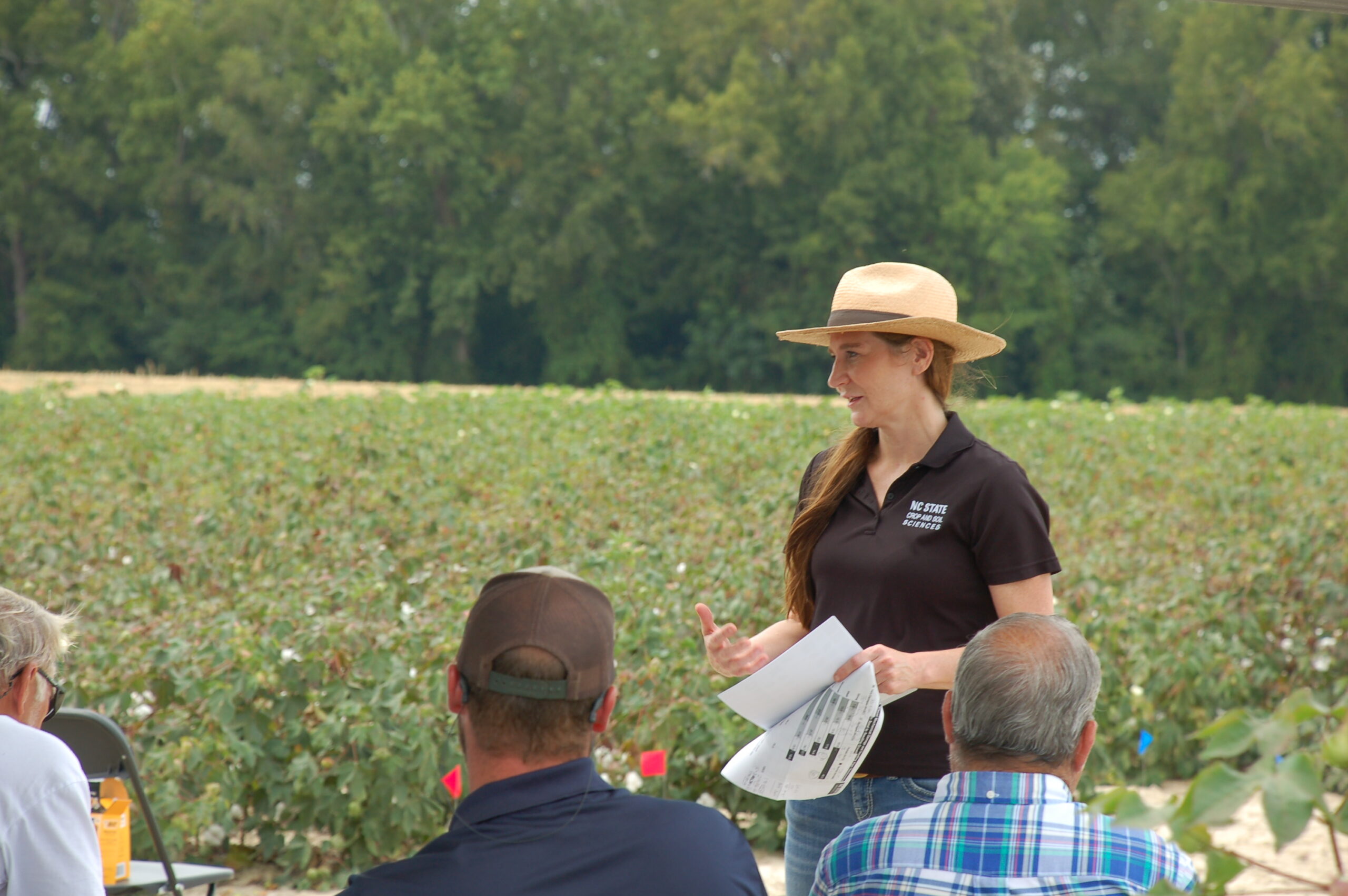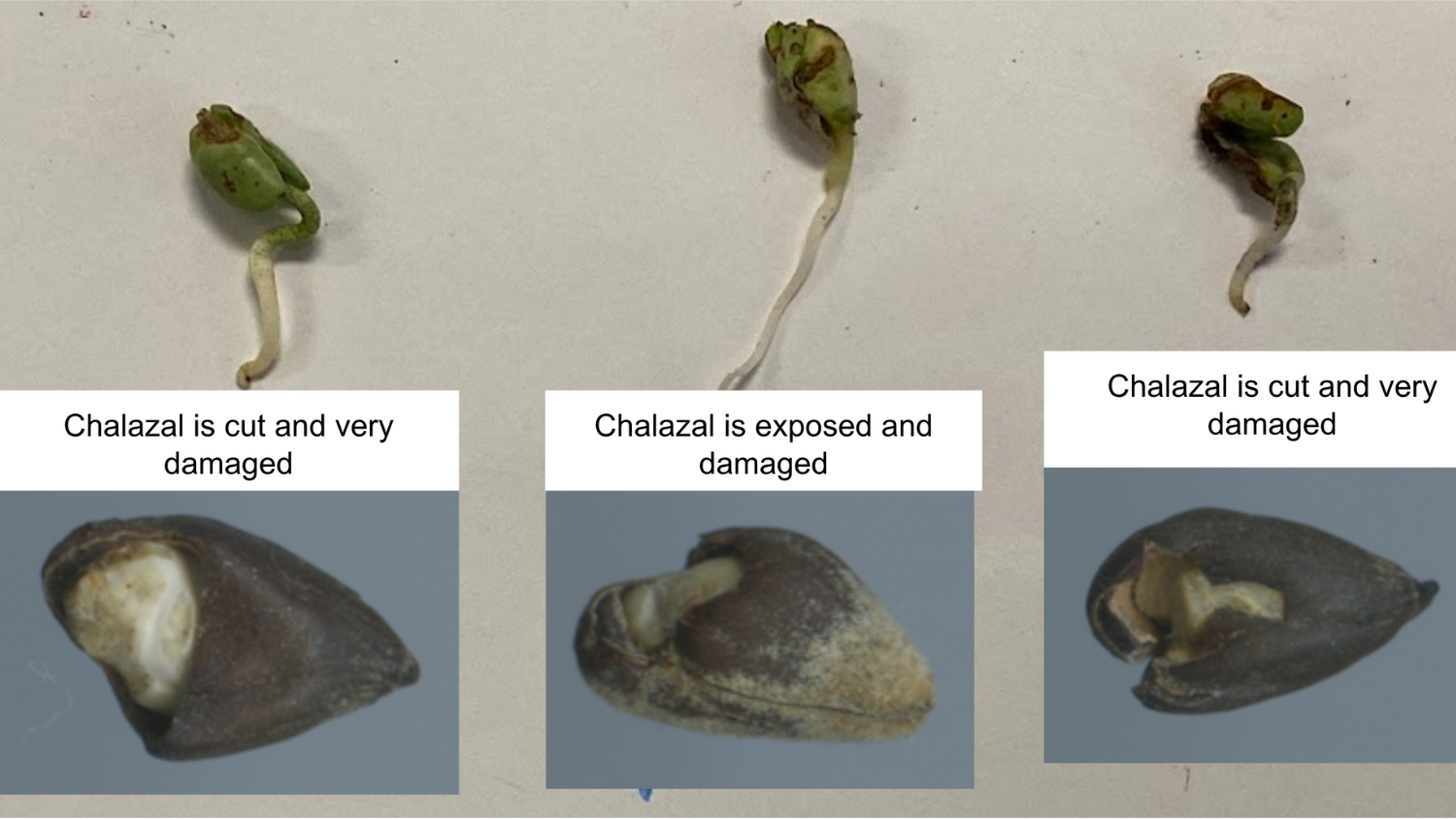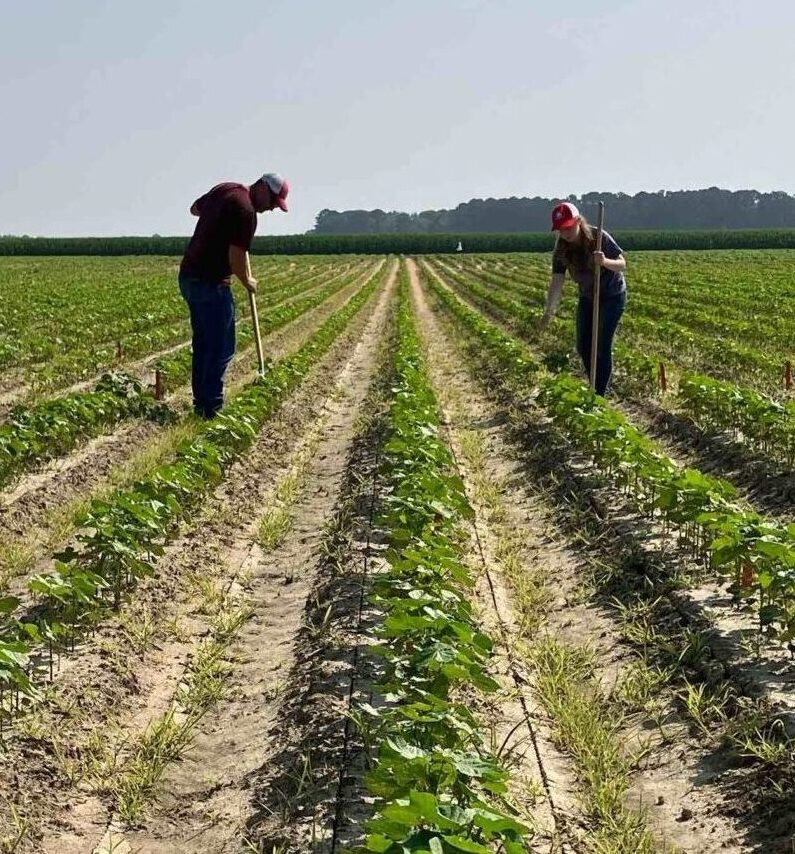Could Biostimulants Save Doomed Cotton Seedlings?

Seed is the second highest direct cost for American cotton farmers, so seed quality is a fundamental industry issue. But processing cotton is a bumpy road. To go from boll to seed bag, next-generation seeds must endure a tortuous journey through harvest and ginning equipment, delinting, and grading stages. It’s a rough-and-tumble route that can leave up to 15% of seed damaged with pinholes or minor abrasions to full-blown splits.
In work funded by Cotton Incorporated, North Carolina State University Department of Crop and Soil researchers discovered that seed damage locations and patterns can accurately predict seedling performance. An interdisciplinary team is working on AI-powered algorithms to speed and enhance seed damage classification.
Now, a new USDA National Institute for Food and Agriculture grant will fund the evaluation of a biological solution that could potentially save doomed seedlings from damaged seed and strengthen their progeny.
Seed Damage Determines Seedling Fate
Heavy damage to cotton seeds has long been known to affect seed germination and seedling performance. Seed companies compensate for this with multiple grading steps to weed out heavily damaged seeds and ensure a minimum of 80% seed germination.
Crop and soil sciences researcher Lori Unruh-Snyder says cotton seed damage has historically been categorized as a binary damaged/normal determination. In 2020, she conducted a 13-state seed quality study funded by Cotton Incorporated.

After studying over 10,000 individual seeds, including 78 varieties from the seven major seed brands, her team found a damage severity gradient rendering eight seed damage classes that directly correlated with seedling performance.
“We found a pattern of cut locations and damage locations that directly related to germination potential, seedling malformation, or ultimately seedling death,” Unruh-Snyder said.

Industry seed testing standards define germination success as 50% intact cotyledons and a minimum 4-centimeter initial stem length. But seed germination doesn’t necessarily equal plant success.

Unruh-Snyder’s team uncovered how specific seed damage types and locations impact seedling vigor and plant yield, even though the seeds would count as “successful” germinations. They found that seed damage fundamentally changes plant biology.
“We found that damaged seed has a different fatty acid profile. Those plants contain more vernolic acid that signals oxidative damage and prohibits growth,” Unruh-Snyder said. “While some damaged seeds may germinate, they aren’t always productive.”

Some effects from damaged seeds aren’t immediately visible. Unruh-Snyder’s study noted rooting abnormalities that caused subtle changes in leaf structure and plant architecture.
“We saw in field trials that some seed damage can prevent a plant from developing a primary root. They only generate small secondary roots as if encountering hardpan soil. Growers might attribute these plant losses to pest damage or frost, but the plant was doomed from the beginning.”

A Seed Scanning App
Unruh-Snyder sees an opportunity to improve the seed grading process before the end product reaches farmers’ fields. She is collaborating with agricultural engineering colleagues to create a seed scanning app that could help seed companies to better assess and categorize seed damage faster.
NC State assistant professor Lirong Xiang is developing computer imaging and AI-powered algorithms to quickly detect and classify seeds into Unruh-Snyder’s eight damage categories. Xiang’s group will then create 3-D models of plants from each seed damage class to link seed damage with variances in plant architecture.

“By training AI models on images of seed damage and the related seedling, we can automate seed classification and phenotype performance,” Xiang said. “Using deep learning to create these datasets can save plant scientists significant time, improve accuracy and allow them to perform larger scale experiments.”
The end product would allow users, likely seed companies or plant breeders, to scan seed lots to identify damage classes and predict plant performance.
Damage Control
Unruh-Snyder doesn’t blame the seed industry for deficiencies, noting that seed lots can have varying amounts of damage.
“Every seed company wants to deliver the best seed quality to farmers. With no published research since the mid-1950s on cotton seed damage, there has been a significant knowledge gap. I hope our work can help improve industry systems and ultimately the farmer’s harvestable product.”
New USDA-NIFA funding will allow Unruh-Snyder’s team to further understand seed damage impacts and evaluate a promising biological intervention.
Impact of Fungicide Contact on Seed Embryos
 Heavily damaged seeds are usually detected and eliminated in processing and grading. But identifying mildly damaged seed out of the bag is nearly impossible because cotton seed is usually fungicide-coated to protect future plant roots from soil pathogens.
Heavily damaged seeds are usually detected and eliminated in processing and grading. But identifying mildly damaged seed out of the bag is nearly impossible because cotton seed is usually fungicide-coated to protect future plant roots from soil pathogens.
While mechanical seed damage is known to harm seedling performance, Unruh-Snyder says that direct contact of the seed kernel with fungicide doesn’t bode well either.
“Even slightly cracked or injured seed can expose the seed embryo to concentrated fungicides intended to disperse in the soil. Investigating this interaction and its impacts is a top priority in the next phase of our study.”
Applying Amino Acids to Buffer Damage
New funding may even help develop a new cotton seed coating with resilience baked in.
Unruh-Snyder’s team is expanding their attention from seed damage to seedling resilience by evaluating an amino acid-based biostimulant’s ability to fortify cotton seedlings and overcome damaged-seed destiny.
The plant-based biostimulant, developed by iQBiotech, uses three primary and three secondary amino acids to increase macro and micronutrient uptake at crucial cotton growth stages, which could strengthen plant yield and reduce environmental stress impacts.
An initial field study of the foliar biostimulant resulted in higher boll counts and weight, greater lint weight, and fiber length.

“In the biostimulant group, tissue samples showed increased boron and manganese uptake, which led to healthier, more robust plants and, ultimately, higher quality bolls,” Starr said. “It was a pilot study of one cotton variety at one farm location, but the results are promising.”
The group is expanding the biostimulant study in North Carolina and Texas for 2023.
Next-Generation Seed Benefits

Stronger plants beget stronger offspring. Unruh-Snyder’s team grew out seedlings from another biostimulant-treated crop and found profound downstream effects.
“In a soybean pilot study, we found that seeds from biostimulant-treated mother plants germinated with significantly longer, more robust roots,” Starr said. “This inherited advantage could help reduce the stress that plants experience during emergence and enhance establishment.”
In 2023, the team will expand the second-generation seed trials in both soybeans and cotton.
Bio-Stimulating Soil Health
In addition to plant growth-stimulating amino acids, the biostimulant includes available carbon to feed soil biota, increase soil organic carbon and plant-available nutrients, and improve soil health and overall system sustainability.
Starr sees this nontraditional crop input as a simple, shining example of agricultural adaptation.
“We know that increasing soil biodiversity positively impacts soil function for crop productivity, environmental quality and, most importantly, yield. Biostimulants, in general, are one of the most promising alternatives to cope with yield losses caused by climate and environmental stress.”

Want More Innovation?
Crop and Soil Sciences’ research impacts farmers, students, and NC citizens. Follow how our discoveries affect agriculture and environmental science by joining our weekly newsfeed.
If you are a student interested in climate mitigation, nutrient management, or crop science, investigate our undergraduate and graduate degree programs, including a deep dive into our agronomy degree. Then join us for a guided email tour of our department and university.
Protecting NC’s agriculture and environment through stewardship is just part of how we are growing the future.

- Categories: